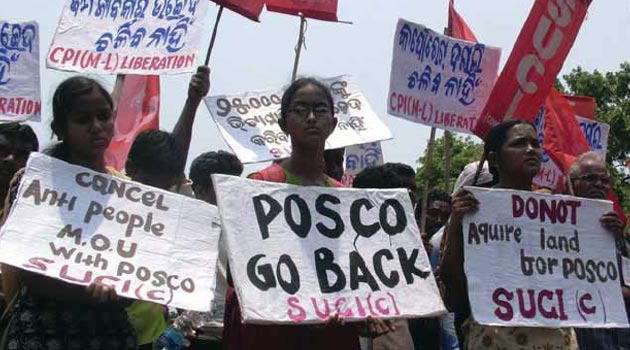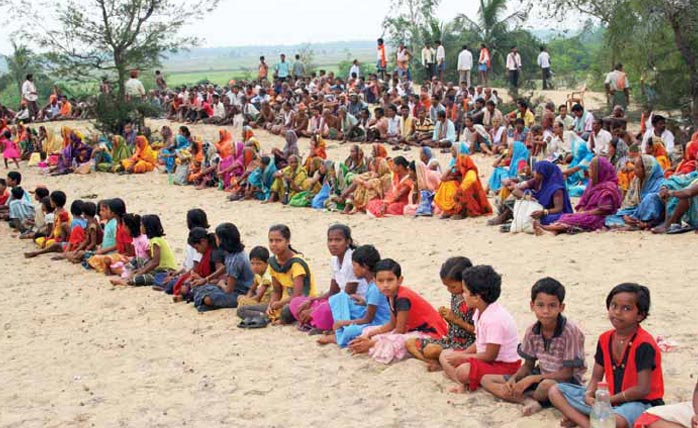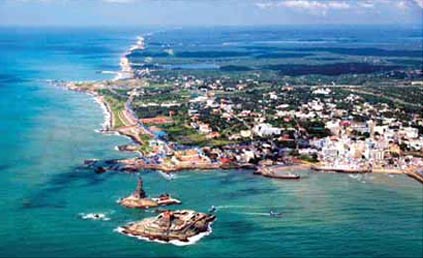INDIA is a land of diverse ecology and its ecosystems include oceans, deserts, forests, mountains, grasslands and wetlands. It has a land frontier of 15,200 km and a coastline of 7,517 km. This coastline is endowed with a wide range of sand dunes, mangroves, coral reefs, sea grasses, salt marshes, mud flats, atomic minerals, estuaries, lagoons and unique marine flora and fauna.
The Environment (Protection) Act, 1986, was enacted to protect this diverse ecosystem from all kinds of predatory activities. Special attention was given to the coastal ecosystem in which more than 30 per cent of India’s population live. This was done through the instrumentality of Coastal Regulation Zone (CRZ). The first CRZ notification was promulgated on February 19, 1991, by the Ministry of Environment and Forests (MoEF). Coastal Zone Management Plans (CZMP) prepared under this had severe flaws. Revised CZMPs sent to the National Coastal Zone Management Authority (NCZMA) were put in cold storage. Typical case is Tamil Nadu and its coastline.
While so, MoEF promulgated CRZ notification 2011 in supersession of the 1991 notification, with directions that fresh CZMP should be prepared by State governments through experienced scientific institutions within a period of 24 months. CRZ-2011 notification mandates that all developmental activities should be regulated by the Central and State governments only within the framework of such approved CZMPs.
This time limit expired in January 2013 and there is no sight of CZMPs anywhere and coastal ‘development’ activities continue to be ‘regulated’ by the deeply flawed and time-expired old CZMP, which is being extended periodically. Latest is the six-month extension up to July 31, 2017, after MoEF was ‘satisfied’ that preparation of CZMPs may take some more time. In the meantime, MoEF, through its Expert Appraisal Committees (EAC), is processing, evaluating and approving huge projects on sensitive coastline that could be destructive.
What is worse, it appears that MoEF has more devious things in mind. A draft Marine and Coastal Regulation Zone (MCRZ) notification is reportedly on the anvil to replace the CRZ-2011 notification under which reclamation of wetlands were illegal and fishing community’s traditional rights over coastal areas get precedence over commercial activities.The new move plans to reverse the whole thing and allow commercial exploitation of ecologically sensitive coastal areas.Accordingly, State governments have been directed to prepare tourism-related big-ticket ‘development’ plans on the coast.
As prelude to this, even the High Tide Line (HTL) is being redrawn in a clandestine manner. Post Tsunami (2004), Institute of Remote Sensing (IRS) team demarcated the HTL of Tamil Nadu’s coast using satellite data and then walking the entire length with a GPS device. This meticulously drawn HTL is being summarily abandoned at the behest of the Shailesh Kayak Committee, set up by the MoEF with the express objective of diluting the CRZ and opening up the coast for commerce. For this purpose, a multi-million contract was awarded to the National Centre for Sustainable Coastal Management working under the MoEF. The purpose is to facilitate creation of real estate on tidal wetlands and obliterate egregious CRZ violations in the guise of updating the HTL map.

A critical question arises. What is the mandate of the MoEF? Is it to protect and safeguard the environment and natural resources of the country, which is the common heritage of its 1.25 billion people? Or, to function as a midwife, chaperoning corporate investors and carpetbaggers in mindlessly exploiting our natural heritage for commercial purposes?
This question needs to be asked and answered because ‘development projects’ on the coast are being vigorously pursued by Central and State governments resorting to misinformation and falsehood. Typical examples of this are massive power plants—nuclear and thermal—located on the coastlines of several States.
A more poignant case in point is the proposed `27,750-crore ultra-mega port project, called the Enayam International Container Transhipment Terminal, on the short but pristine sea-coast of Kanyakumari in Tamil Nadu which is the “Land’s End of India”. The project is proposed to be implemented in three phases covering a period of 2017-2030 (Total Capacity 127.05 million tonnes per annum).

Kanyakumari is among the smallest districts in the country with an area of 1,684 sq km, of which 30.2 per cent constitutes reserved forest. With a high population density of 1,111 persons per sq km, the district is congested. Its western coastline on the Arabian Sea is just about 60 kilometres long and has most of the eleven features of CRZ 1 outlined in the CRZ-2011 notification. More prominent among these are: (a) mangroves; (b) corals and coral reefs and associated biodiversity; (c) sand dunes; (f) salt marshes; (g) turtle nesting grounds; (j) nesting grounds of birds; (k) areas or structures of archaeological importance and heritage sites. Thirty-six out of 60 kilometres of this coast comes under the Enayam Project Affected Area that has numerous villages with population running into several lakhs. Area-wise it is 980 sq km—half on land and half in the sea. This coast, prone to high sea erosion/accretion, also bore the brunt of the deadly tsunami that killed hundreds of people.
Enayam ultra-mega port has the potential of destroying or severely damaging nature’s rich endowments in Kanyakumari district. On the coast, these include mangroves, sand dunes, turtle nesting, coral reefs, rich fisheries, non-fisheries, atomic minerals and other resources. Plains of the district has several water bodies, ponds, rivers and streams, fine paddy fields, flower gardens, coconut plantations, banana grooves, livestocks and many other endowments. Mountains (tail-end of Western Ghats) have dense forests and almost all the plantation crops, dominant being the high-quality rubber. The district also has all kind of spices and herbal crops.
If a scientific study, mapping and classification is done under CRZ-2011 notification, several parts of Kanyakumari coast would get classified under CRZ-1 invoking the prohibition of construction clauses under Section 8 (1) and Section 3 (viii) since all these features existed when the original 1991 CRZ notification was issued. Since CRZ-2011 has been issued under Environmental Protection Act, 1986, it is mandatory for MoEF to adhere to CZMPs issued under this notification only and cannot have ad-hoc appraisals done through manufactured reports.
But this is what appears to be happening in Enayam. Obviously, playing to the tune of an Indian MNC specialising in ports and harbours, the Union Ministry of Shipping, through VO Chidambaranar Port Trust at Tuticorin, got a ‘Techno-Economic Feasibility Report’ for this project prepared (rather manufactured) by Boston Consulting Group, USA, and TYPSA Consulting Engineers and Architects, Spain, in quick time (August 2015). A massive infrastructure project like this should satisfy five sets of feasibilities—technical, economic, financial, social and environmental. A plain reading of this BCG-TYPSA Report satisfies only one set—technical, due to the shore depth structures can be built. Other feasibilities are subject to stringent/non-practical conditions—heavy cargo underwriting for economic viability, huge viability-gap funding for financial feasibility, massive displacement and loss of livelihood for social viability. Environmental feasibility is well-nigh impossible.
In December 2015, the same consultants were given the task of preparing a detailed project report. On July 5, 2016, the Union Cabinet gave ‘in-principle’ approval for this project without making provision for a single rupee as budget! This was mainly meant to put pressure on the reluctant State government of Tamil Nadu.

Simultaneously, a propaganda blitz of falsehood and disinformation about the project has been unleashed. Media advertisements are taken out, spending millions of rupees, promising huge industrialisation and employment generation in this pocket-sized district! Viability of adjoining Adani Vizhinjam International Transhipment Terminal (barely 30 km from Enayam) itself is suspect, and would take many years to prove. Yet there is this mad rush for a four-times larger port just kilometres away? Obviously, there is a hidden agenda.
WHILE so, VOC Port moved the MoEF on October 20, 2016, seeking Prior Environmental Clearance. In the Form No. 1 filed for this purpose, the project proponent concealed almost all the features of the Kanyakumari coastal ecosystem. Several critical concerns of environmental, economic and social impacts of the project have also been suppressed. The MoEF referred this to the EAC, which routinely issued Terms of Reference for CRZ appraisal on November 24, 2016, without proper scoping or preliminary check.
This action of the MoEF and EAC is untenable because the basic legal requirement for such appraisal—CZMP for Kanyakumari coast—does not exist. Though the MoEF and EAC were aware of this, they have commenced the ad-hoc/stand-alone appraisal process obviously under duress. It looks as if other projects are being handled in this manner. That is why this unethical extension of CZMP for no rhyme or reason.
The MoEF has not learnt any lesson from the Posco fiasco. This South Korean steel behemoth entered Odisha in June 2005 with a $12 billion project but had to leave in March 2017 in the face of serious environmental violations and opposition from civil groups and local residents, together with legal and administrative tangles. This project involved major infrastructure development on Odisha’s coastline.
The Union Ministry of Steel promoted this project and the MoEF went out of the way to give clearances. Meena Gupta, former Secretary, MoEF, who headed a four-member Expert Committee to iron out things, resorted to manipulation. But the other three members—V Suresh, a civil liberties lawyer, Devender Pande and Urmila Pingle, experts on forests and tribals, respectively—stood their ground. The project had also violated the Forest Rights Act, 2006, as no forest land can be allotted to anyone until all the rights of the people are protected and their consent obtained. In the event, the environment clearance given by the MoEF was challenged in the National Green Tribunal where the project faced a rollercoaster ride.
 From the very beginning, deceit was resorted to by Posco to obtain Environmental and CRZ clearances. For the purpose, this massive project was deliberately unbundled into smaller parts and applications moved to secure their clearances as though they were independent projects (4 MTPA steel complexes, 400 MW power plants and captive “minor” port), even though they constituted one project and were situated within one complex and Posco had clear intentions of ramping up production to the full capacity of 12 MTPA by 2011. These clearances were given on the strength of a single-season rapid Environmental Impact Assessment (EIA) instead of mandatory full-year comprehensive EIA.
From the very beginning, deceit was resorted to by Posco to obtain Environmental and CRZ clearances. For the purpose, this massive project was deliberately unbundled into smaller parts and applications moved to secure their clearances as though they were independent projects (4 MTPA steel complexes, 400 MW power plants and captive “minor” port), even though they constituted one project and were situated within one complex and Posco had clear intentions of ramping up production to the full capacity of 12 MTPA by 2011. These clearances were given on the strength of a single-season rapid Environmental Impact Assessment (EIA) instead of mandatory full-year comprehensive EIA.
The township project, requiring considerable additional land, as well as the huge water requirement for the project, was suppressed. Claiming the port to be a “minor” one, was a major fraud. The port was designed for Capesize ships—170,000 DTW capacity, each approximately 280 metre in length, indeed too huge to come into the ecologically sensitive Jatadhar creek. This would require 12-km channels and tranquil berthing facilities for which there would be massive sea walls built—one 2 km and another 1.6 km long. The devastation that such massive infrastructure facilities would cause is unimaginable, considering that the Jatadhar creek is an important nesting site for the critically endangered Olive Ridley turtles. This is the region of paan kethis (betel vine farms) where sand dunes provide sweet soil and water and also protection during super-cyclones like the one in 1999 that killed 15,000 people. The Odisha government had also suppressed critical concerns of environmental and social impacts of the project.
THE main purpose of the project was to plunder the country’s natural resources in general, and coastline in particular, and deprive the people of livelihood and sustenance including drinking water. The MoEF turned a blind eye. But these were of no avail and the project, serenaded as harbinger of ‘development’ and prosperity, collapsed on the face of strong resistance from a vigorous anti-Posco movement by the local people—forest dwellers, fisher-folks, farmers, peasants. In Enayam also, apprehending dislocation of at least one lakh population—both fishermen and farmers—from their dwellings, loss of livelihood and near destruction of the coast, the local people are up in arms and the project is facing stiff resistance.
As things are unravelling, it looks as if the MoEF is putting the coastline in peril by pitching on the side of ‘development’ in its war against nature. It is like the fence eating the crops. Whither environmental governance!
The writer is a former Army and IAS officer. He is also former Administrator, Chandigarh Capital Project. Email: deva1940@gmail.com



























































